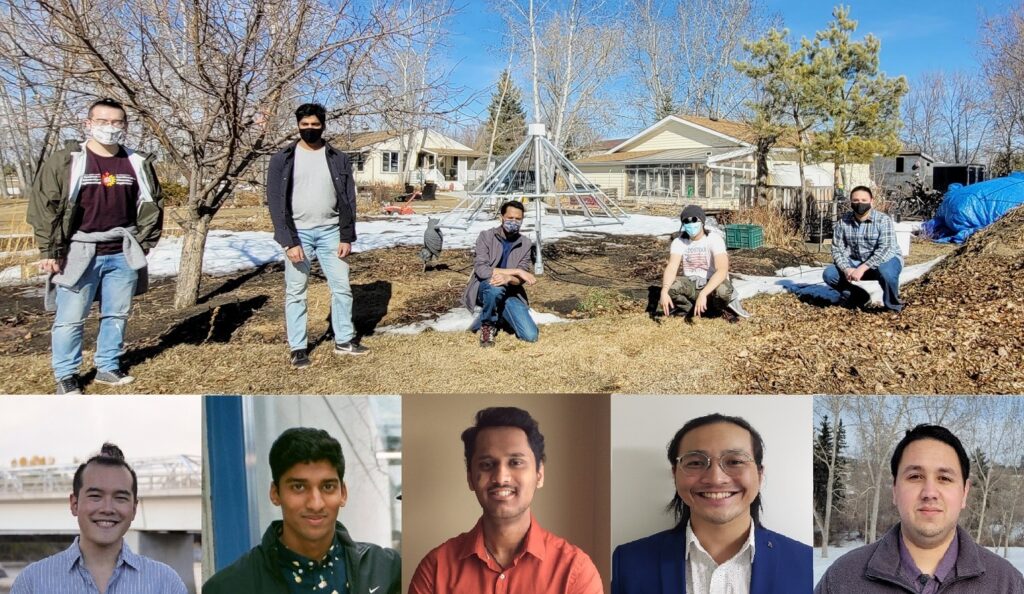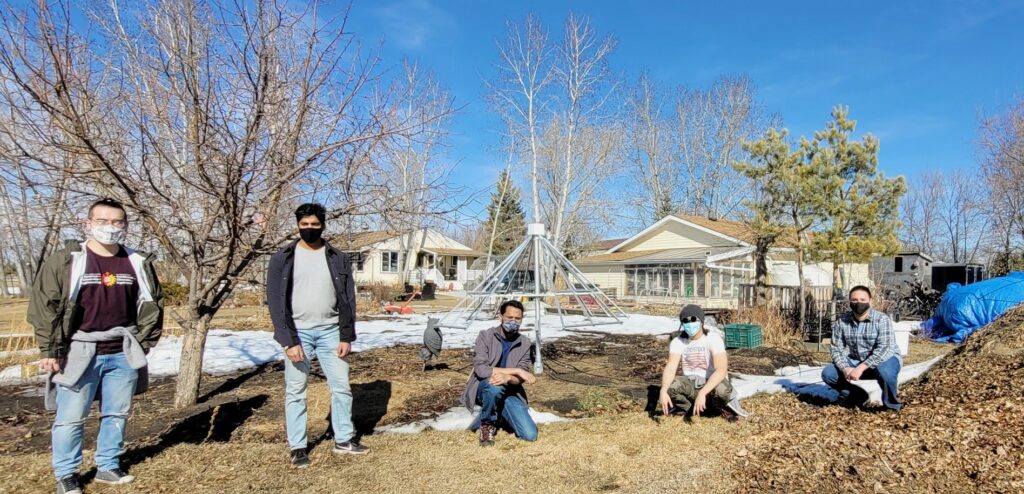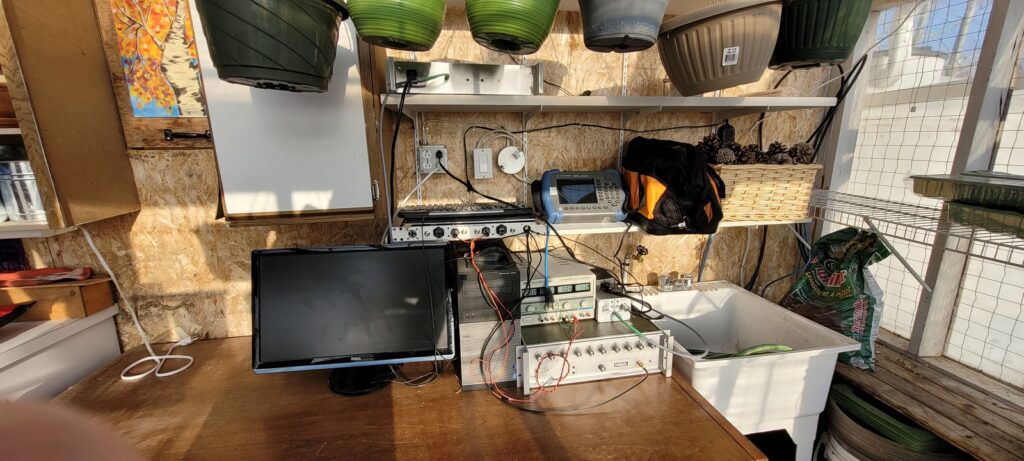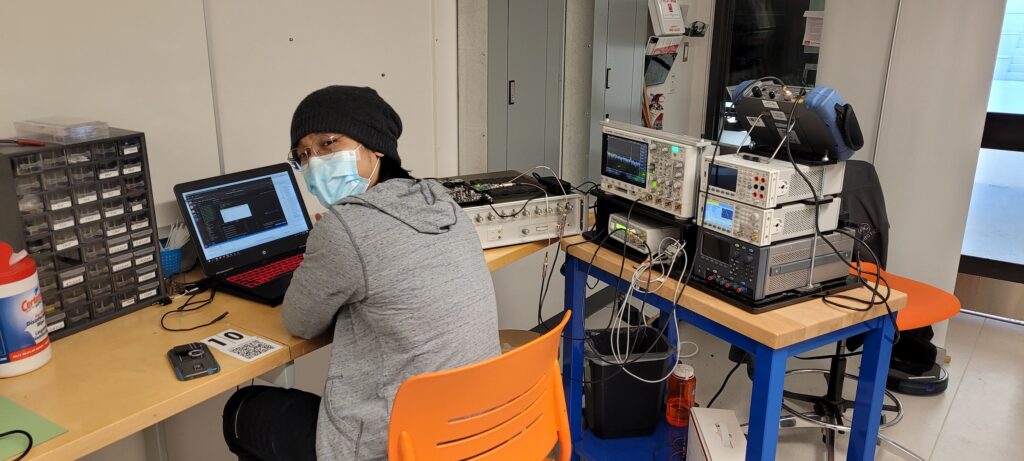
Project Category: Electrical
Join Us on Zoom
Watch Our Video
View or Save Our Poster
About our Project
Thank you for taking the time to check out what we have been working on for the last 8 months! If you are a judge, thank you for taking the time to evaluate all the hard work put in by all the teams this year. If you are a spectator, thank you for your interest in our project! We encourage you to check out our video and join us on Zoom for more information using the links above.
We designed and built data processing methods and components to track how energy from space, such as the northern lights, affects modern communications and navigation systems. Using a riometer, a combination of radio antennae and data processing hardware and techniques, our group aimed to update an aging solution currently used around the world.
We worked with the University of Calgary’s Auroral Imaging Group (AIG) as part of a larger research project to create a design that could be easily reconfigured by AIG once handed over. Using digital design techniques on commercially available embedded hardware, we processed and transformed antenna data to a form easily understood by the space weather community.
The design was tested using controlled data from a signal generator and real space-weather data from a physical antenna. To ensure the data was as clean as possible, we built and added a custom power supply to our design.
Meet our Team

Team Bios From Left to Right
Eric Fung (Project Manager and Documentation Lead)
Electrical Engineering with a Biomedical Specialization ~ Project Engineering Co-op Student at TC Energy
In his spare time, Eric aspires to start his own boy band, but didn’t realize that making a backstreet boys music video in a Cookie Monster onesie is a horrible way to start.
Saurav Castelino (Research Lead)
Electrical Engineering ~ Signal Design Co-op Student at CP Rail
While on internship, Saurav attended every work meeting about work-life balance.
Sameep Jagtap (Software Lead)
Electrical Engineering ~ Undergraduate Researcher under Dr. Belostotski (University of Calgary)
In his spare time he likes to adapt popular screenplays to star Liam Neeson as one of the lead characters, notably Liam Neeson as Troy Bolton from the popular musical, High School Musical.
Ronn Miguel Tiangsing Delos Reyes (Hardware Lead)
Electrical Engineering ~ Instrument Design and Assembly Intern at the Auroral Imaging Group (University of Calgary)
During his internship he spent hours waving pictures of a moose and John Krasinski in front of a camera.
Joshua Alvares (Documentation Lead and Project Manager)
Electrical Engineering with a Computer Minor ~ Remote Instrumentation and Operations Intern at the Auroral Imaging Group (University of Calgary)
Joshua has realized through this project that he prefers the company of FPGA’s over humans.
Our Photo Gallery

A team photo from our only full team work day we were able to do in person with our antenna in the background. 
The antenna provided by the sponsor for testing. 
Our antenna testing setup. 
Testing conducted at the University of Calgary’s Maker Multiplex.
Details About our Design
HOW OUR DESIGN ADDRESSES PRACTICAL ISSUES
Space weather phenomena are beautiful wonders to behold but they can also have significant effects on modern technology we take for granted. GPS, internet, radio, satellite cable, and cell phones all rely on wireless signals that are easily manipulated by aurora. Aurora can cause miss-communications and even signal dropouts. The effects of this can range from a dropped TV signal to automated mining equipment steering off course.
While our design does not help solve these issues, it does help world-recognized researchers study it. The more we understand about auroral phenomenon the closer we can get to actually solving the problems it causes.
WHAT MAKES OUR DESIGN INNOVATIVE
Our design uses commercially available, configurable hardware so that the solution is customizable if research needs change. We use a technology called Field Programmable Gate Array’s (FPGA’s) to design software that is run as hardware. This technology uses millions of transistors to form a customizable electronic fabric. Our software configures this fabric to process collected data at extraordinary speeds not possible using conventional methods.
WHAT MAKES OUR DESIGN SOLUTION EFFECTIVE
As it stands, our design collects clean and accurate data that will help simplify current attempts at similar projects. Our simple approach will allow researchers to change configurations and parameters on the fly in further testing and development to attain even better results. A solution isn’t effective if it can’t be reproduced and improved upon later so our designs simplicity and flexibility is key to being effective.
Our design can be simplified to 3 simple steps:

This is an effective and efficient pipeline that can be tweaked by adding more calculations or filtering later for even better results.
HOW WE VALIDATED OUR DESIGN SOLUTION
We tested our design throughout the year at major milestones to ensure each step was done correctly. We tested mostly with controlled data generated with lab equipment. This allowed us to verify that data produced by our system matched what we expected it to be for the given input. After completing our prototype, we extended testing to a physical antenna matching those onsite across Canada. While this data could not be verified, it provided valuable insight into system performance and exceeded expectations.
FEASIBILITY OF OUR DESIGN SOLUTION
Our design’s reproducibility and customizability is what makes this design so effective for research. This design is very feasible for researchers and staff at the Auroral Imaging Group to pick up where we left off and take this design full cycle into the field where it can make a real difference for space weather research.
Partners and Mentors
We would like to thank Dr. Emma Spanswick, Lukas Volmerhaus, and the rest of the University of Calgary’s Auroral Imaging Group for sponsoring our project. Their significant financial and mentorship aid made this project possible.
We would also like to thank our academic mentors Dr. Denis Onen (Univeristy of Calgary) and Dr. Vincent Grennerat (Université Grenoble Alpes) for their help and support throughout the project.
